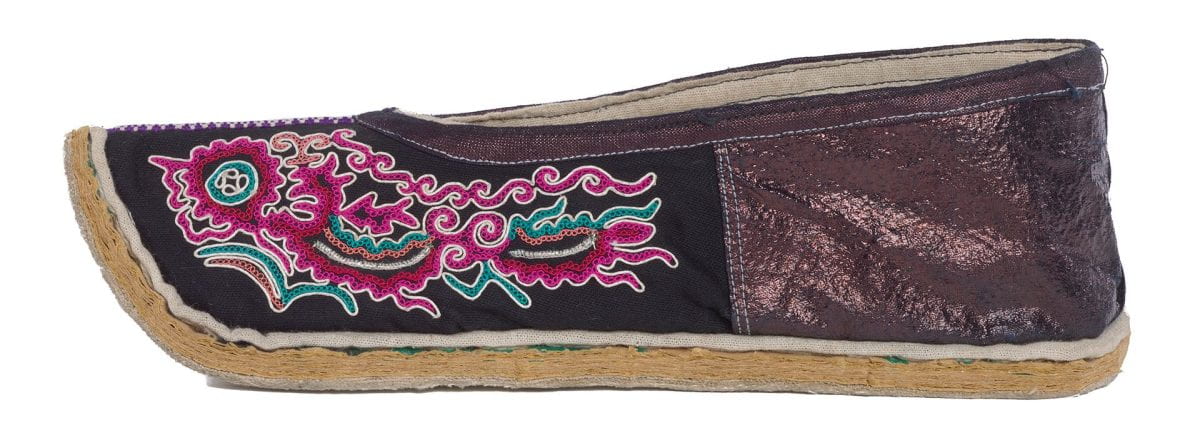Amid the remote mountain valleys and terraced hillsides of southwest China, members of the Dong ethnic minority have maintained their lifestyle and traditions for centuries.
Throughout the year, festivals with singing, dancing and games serve as opportunities for young Dong men and women from different villages to meet one another. On these occasions, everyone shows off their finest traditional clothing, which includes highly embroidered jackets, skirts, aprons and shoes.

This pair of embroidered shoes was likely made for a Dong woman’s festival outfit or for a wedding. The Dong use paper patterns to create these embroideries and highlight their collective history, beliefs and wishes for the future. Older women, highly respected for their artistry and knowledge of traditional designs, draw patterns on a stack of ten to twelve sheets of paper. The patterns are then punched out with an awl and sold individually at the market. They can then be tacked onto cloth, and embroiderers stitch over the paper template, which remains on the finished textile.

The finesse of festival costumes is much admired and indicates a prospective bride’s skill and diligence. But times are changing. Today, young men and their families may find a woman’s educational achievements and wage-earning potential more attractive. These changing priorities mean that some families devote less time to developing textile skills and traditional costumes. Instead, machine-embroidered ribbons, aprons and even full festival costumes are sold at local shops. Still, traditions continue, and elaborate embroidery remains a highly valued art form among the Dong.
